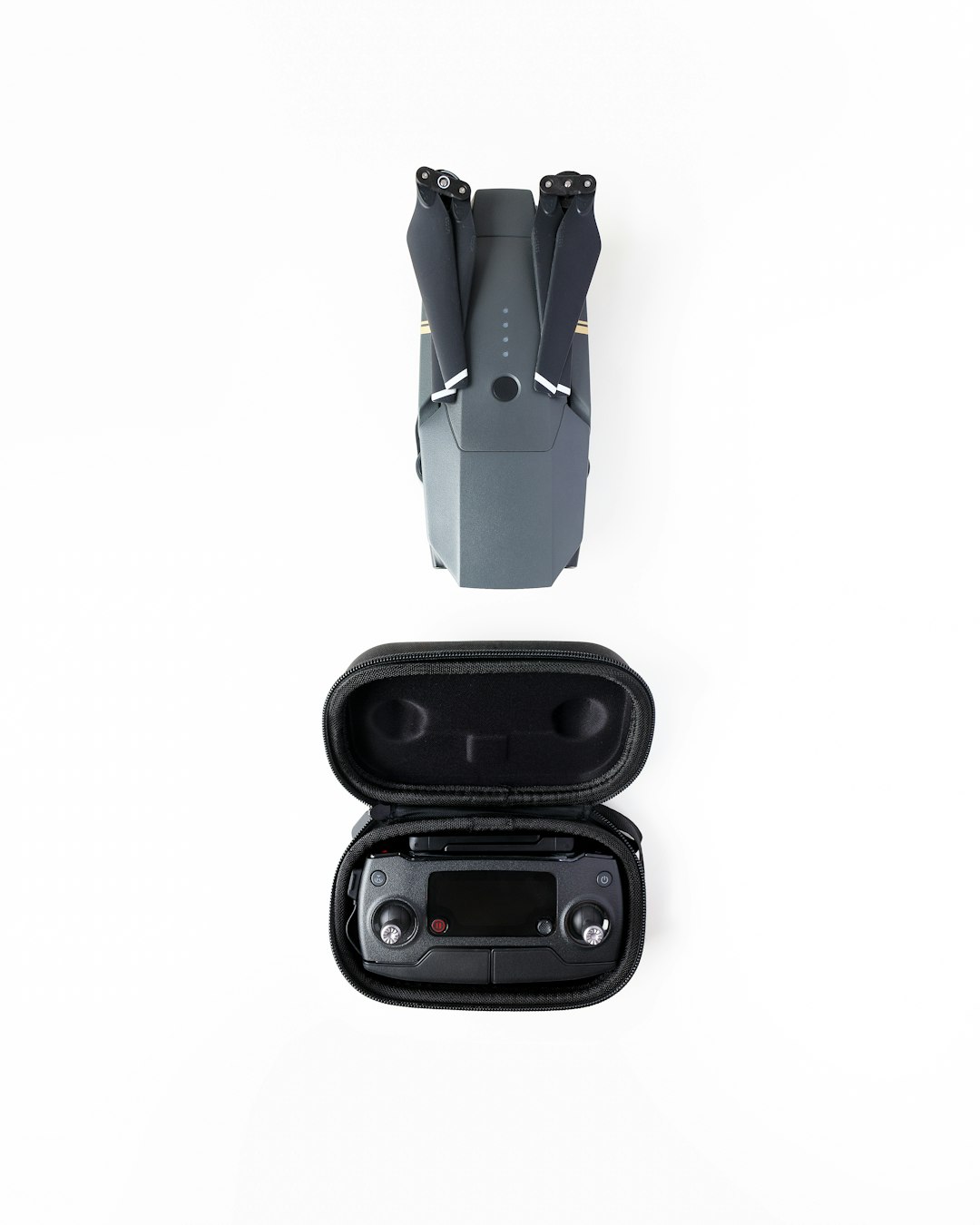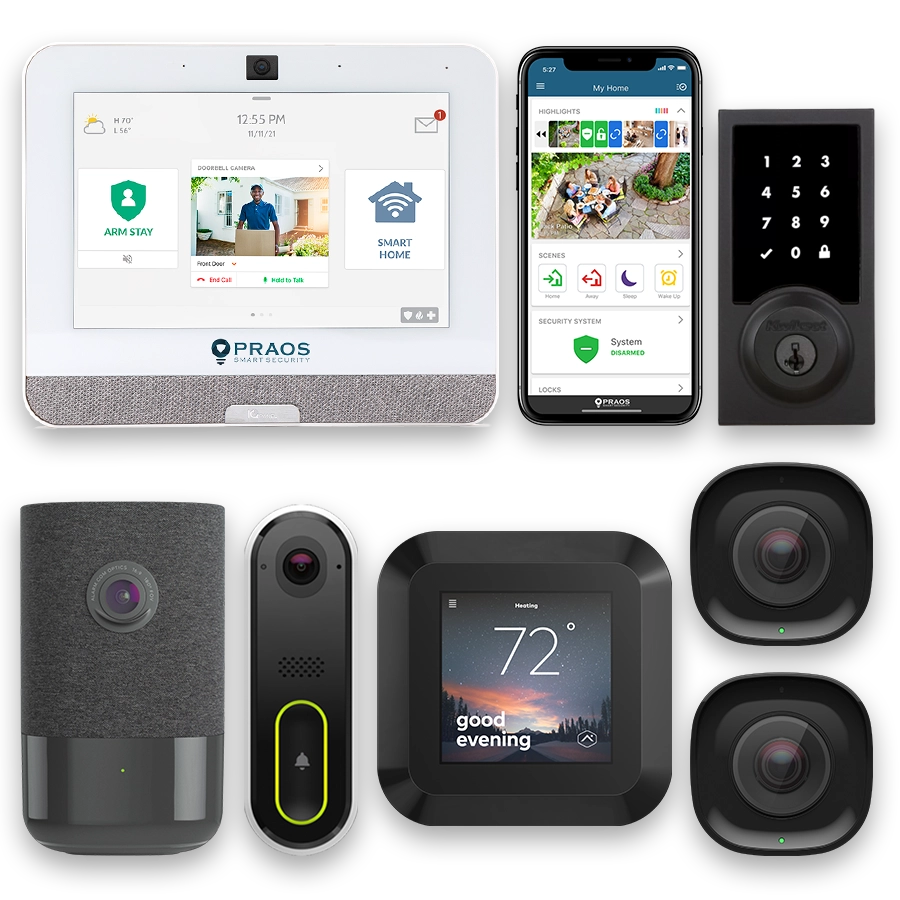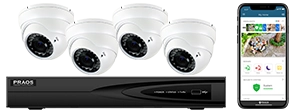The Rise of Surveillance Technology and its Adoption
Over the past few decades, advancements in surveillance technology have significantly transformed the landscape of security and crime prevention. As these technologies have become more sophisticated, their adoption has increased across various sectors, including residential neighborhoods.
The surge in the use of surveillance cameras can be attributed to several factors:
- Decreasing costs of technology
- Enhanced storage options, such as cloud storage
- Improved image and video quality
- Integration with smart home systems
The Growth in Surveillance Technology
One of the most noticeable trends is the rapid growth in the market for surveillance cameras. According to a report by IHS Markit, the global number of surveillance cameras installed in public and private spaces reached over 1 billion units by the end of 2021, representing a compound annual growth rate (CAGR) of 12.4% since 2014.
Adoption in Residential Areas
The adoption of surveillance cameras in residential neighborhoods is fueled by various concerns over safety and security. Homeowners, community associations, and local governments see these devices as integral tools to deter criminal activity and provide a sense of security.
According to a survey conducted by the International Data Corporation (IDC), the installation of home security cameras has grown by 20% annually since 2015. The survey also reveals that a significant portion of homeowners are willing to invest in surveillance systems as part of their overall home security package.
Installation Statistics
An analysis by Statista provides insight into the increasing number of surveillance camera installations. The following table details the growth in camera installations in residential areas from 2015 to 2020:
| Year | Number of Installations (millions) |
|---|---|
| 2015 | 15 |
| 2016 | 18 |
| 2017 | 22 |
| 2018 | 26 |
| 2019 | 31 |
| 2020 | 37 |
Technological Advancements
The continuous improvement in technology has led to better and more user-friendly surveillance systems. Some key advancements include:
- High-Definition (HD) and 4K Resolution: Provides clearer and more detailed footage, making it easier to identify subjects and activities.
- AI and Machine Learning: Enables features like motion detection, facial recognition, and automated alerts.
- Wireless Technology: Simplifies the installation process and allows flexible camera placement.
- Integration with Mobile Apps: Provides real-time access to footage and controls via smartphones and tablets.
These advancements make surveillance systems more accessible and effective for residential use, contributing to their increased adoption and the overall sense of security in neighborhoods.
Understanding How Surveillance Cameras Deter Crime
Surveillance cameras have become an integral aspect of modern crime prevention strategies. Their ability to deter criminal activity hinges on several psychological and practical mechanisms.
One primary way surveillance cameras deter crime is through the perceived risk of apprehension. When potential criminals know they are being watched, the likelihood of being caught increases significantly. This perception alone acts as a powerful deterrent. Studies, such as those conducted by the Urban Institute, have shown that visible cameras can reduce crime rates in certain areas by up to 50%.
Moreover, surveillance cameras contribute to crime prevention by providing real-time monitoring and enabling swift responses. This capability allows law enforcement to react promptly to ongoing criminal activities, thereby potentially stopping crimes in progress. According to the National Institute of Justice, cities with integrated surveillance systems and rapid response protocols have seen substantial decreases in crime rates.
Another essential factor is evidence collection. Surveillance footage can serve as crucial evidence in court proceedings, aiding in the prosecution of offenders. Additionally, the presence of cameras can improve public trust in law enforcement by providing an unbiased account of events, thus enhancing community-police relations.
Surveillance cameras also influence suspect behavior through the Hawthorne effect, where individuals modify their behavior in response to their awareness of being observed. This psychological response can lead to reductions in both violent and non-violent offenses.
Critically, the placement and visibility of cameras play a substantial role in their effectiveness. Cameras positioned in high-traffic and high-crime areas, with clear signage indicating their presence, maximize deterrence. Research by the Campbell Collaboration found that strategic camera placement is key to achieving noticeable reductions in criminal activities.
In conclusion, surveillance cameras serve multiple functions that collectively help deter crime in neighborhoods. By increasing the risk of apprehension, providing real-time monitoring, aiding in evidence collection, influencing suspect behavior, and through strategic placement, they contribute significantly to enhancing community safety.
Case Studies: Successful Implementation in Various Neighborhoods
Several neighborhoods across different regions have successfully implemented surveillance cameras to bolster community safety. The following case studies illustrate varying approaches and outcomes regarding the successful usage of surveillance technology.
Chicago, Illinois: Operation Virtual Shield
Chicago’s Operation Virtual Shield is one of the largest and most comprehensive surveillance systems in the United States. Implemented in 2003, this extensive network of cameras incorporates both publicly and privately owned surveillance resources. An assessment of the program revealed that surveillance cameras played a significant role in reducing crime in monitored areas. Specifically, a study published in 2011 by the Urban Institute found a marked decrease in crime within areas covered by surveillance, compared to those without such coverage.
London, United Kingdom: The Ring of Steel
London’s “Ring of Steel” is an elaborate system of surveillance cameras and roadblocks around the city’s financial district, initially installed in response to the threat of terrorist activities. Since its inception, this network has evolved to address broader crime prevention needs. The use of CCTV in London has been associated with a reduction in crime rates, especially in high-density areas such as the city center. According to a 2005 report by the UK Home Office, the presence of CCTV cameras has led to notable decreases in various crime categories, particularly property-related offenses.
Baltimore, Maryland: CitiWatch Program
Baltimore introduced the CitiWatch program in 2005, consisting of a network of approximately 500 cameras distributed across the city. This program has been linked to a reduction in crime rates by providing real-time monitoring capabilities to law enforcement. A 2011 study by Johns Hopkins University found that areas with surveillance cameras experienced a decrease in violent crime by approximately 24%. Additionally, the presence of cameras has increased the arrest rates by providing video evidence that supports the prosecution process.
San Francisco, California: Community Camera Program
San Francisco has promoted a community-centric approach with their Community Camera Program. This initiative encourages residents and business owners to install cameras and register them with local law enforcement. Through collaboration, this program has created a wide network of surveillance that assists in criminal investigations. An evaluation conducted by the RAND Corporation in 2008 showed that such neighborhood cooperation enhanced both crime deterrence and resolution rates, since the footage often provided critical leads.
These examples demonstrate that when strategically implemented, surveillance cameras can be a potent tool in crime prevention and public safety enhancement. The real-world applications highlight the importance of integrating technological solutions in a comprehensive security framework tailored to specific community needs.
Legal and Ethical Considerations of Surveillance Cameras
Surveillance cameras in public and private spaces raise several legal and ethical considerations. These concerns revolve around privacy rights, the legality of recordings, data storage, and potential misuse of surveillance technology.
Privacy Rights
The deployment of surveillance cameras must balance the need for security with individuals’ right to privacy. In many countries, privacy laws regulate how surveillance data can be collected and used. For example, the General Data Protection Regulation (GDPR) in the European Union sets strict guidelines for data collection, including surveillance footage, to ensure individuals’ privacy is respected.
Legality of Recordings
Different jurisdictions have varied laws governing the use of surveillance cameras. In the United States, for instance, the legality of recording without consent changes from state to state. Some states require both parties in a conversation to consent to being recorded, while others follow a “one-party consent” rule, meaning only one person involved must agree to the recording.
Data Storage and Security
Proper data storage and security measures are crucial to prevent unauthorized access to surveillance footage. This includes using secure and encrypted storage solutions, limiting access to data to authorized personnel only, and regular audits of the data handling processes. The increasing adoption of cloud storage for surveillance data calls for robust cybersecurity measures to protect against potential breaches.
Potential Misuse of Technology
The potential for misuse of surveillance footage is a significant concern. Instances of surveillance cameras being used to infringe on personal freedoms, intimidate individuals, or inappropriately monitor employees are documented. Ethical guidelines and strict regulations should be established to prevent such misuse.
Transparency and Accountability
Transparency about the use of surveillance cameras is essential to maintain public trust. Clear signage should inform individuals about the presence of surveillance cameras. Additionally, mechanisms for accountability should be in place, ensuring that surveillance practices adhere to ethical standards and legal requirements.
Community Involvement
Engaging with the community about the implementation and usage of surveillance cameras can help address ethical concerns. Public consultations and feedback mechanisms can ensure that surveillance measures have community support and are implemented transparently and responsibly.
Understanding and addressing the legal and ethical considerations surrounding surveillance cameras is vital for their effective and responsible use in crime prevention. By following legal guidelines and ethical principles, communities can enhance safety without compromising individual privacy rights.
Cost-Benefit Analysis: Financial Implications for Community Safety
When evaluating the deployment of surveillance cameras within a community, a cost-benefit analysis is essential to assess the financial implications and overall impact on community safety. This involves examining the initial costs of installation, ongoing maintenance expenses, and the potential savings and benefits accrued through crime reduction.
Initial Costs
The upfront costs for installing surveillance cameras can vary widely based on the type and number of cameras, as well as the complexity of the necessary infrastructure. Factors include:
- Equipment Costs: The price of cameras ranges from a few hundred to several thousand dollars per unit, depending on features such as resolution, night vision, and, weatherproofing.
- Installation Costs: Professional installation services may charge between $50 to $200 per camera. This covers mounting the equipment, ensuring proper angles, and linking them to a central system.
- Network and Storage: Setting up a robust network to support multiple cameras, along with storage solutions for video data, can add to initial expenses.
Ongoing Costs
Beyond the initial setup, surveillance systems incur ongoing costs, which include:
- Maintenance: Regular maintenance is necessary to keep cameras functional and may involve cleaning, repairs, and software updates.
- Monitoring: Employing personnel to monitor camera feeds in real-time can be a significant expense, although some communities may opt for automated systems.
- Data Storage: Continuous recording and storage of video footage require considerable digital storage space, leading to recurring costs.
Potential Benefits
The financial benefits of deploying surveillance cameras are often measured through reduction in crime rates and associated cost savings:
- Crime Prevention: Studies have shown that areas with visible surveillance can experience a reduction in crime rates. For example, a review by the Urban Institute found that crime declined in areas with public surveillance systems.
- Increased Property Values: Safer neighborhoods often see a rise in property values, which can benefit homeowners and increase local tax revenues.
- Insurance Premiums: Reduced crime rates may lead to lower insurance premiums for residents and businesses, as the risk of theft and vandalism decreases.
Conclusion
A comprehensive cost-benefit analysis highlights both the significant initial investment and the ongoing expenses associated with maintaining a surveillance system. However, the potential benefits, including crime reduction, increased property values, and lower insurance costs, can make it a worthwhile investment for enhancing community safety.
Integrating Surveillance Cameras with Community Policing
Integrating Surveillance Cameras with Community Policing
Integration of surveillance cameras with community policing is a practical approach to enhancing neighborhood safety. Community policing focuses on building ties and working closely with community members. When combined with surveillance technology, it can create a robust mechanism for crime prevention.
Role of Surveillance Cameras in Community Policing
Surveillance cameras can serve as an extension of the community policing model by providing real-time monitoring and recording of suspicious activities. This allows law enforcement to respond more rapidly to incidents, potentially preventing crimes before they escalate or assisting in the capture of perpetrators.
Enhanced Response Time
One of the key benefits of integrating surveillance cameras with community policing is the improvement in response times. Footage from surveillance cameras can be quickly accessed and reviewed by police officers to assess the situation and plan their response.
Below is a table that highlights the impact of enhanced response times on crime rates based on various studies:
| Study Source | Impact on Crime Rates |
|---|---|
| Urban Institute (2011) | 20% reduction in crime in areas with camera systems |
| Los Angeles Police Department (2020) | 25% faster response times to incidents in monitored areas |
Community Involvement
Community policing emphasizes the importance of resident involvement. Surveillance cameras can foster greater community participation by encouraging residents to report incidents and by increasing the overall sense of safety. When citizens feel safer, they are more likely to engage with and support local law enforcement efforts.
Data and Analytics
The use of surveillance cameras provides valuable data that can be analyzed to identify crime patterns and hotspots. Law enforcement agencies can use this data to allocate resources more effectively and monitor areas with higher crime rates. Predictive policing models, which use past crime data to anticipate future incidents, further enhance the capabilities of community policing.
By integrating surveillance cameras with community policing strategies, neighborhoods can benefit from a multi-faceted approach to crime prevention. This synergistic relationship between technology and community engagement holds promise for creating safer, more secure communities.
Future Trends in Surveillance and Crime Prevention
The landscape of surveillance technology is continually evolving, and significant advancements are anticipated to further enhance crime prevention strategies in neighborhoods. Understanding these future trends is crucial for communities aiming to stay ahead in maintaining safety and security.
Artificial Intelligence and Machine Learning
One of the most prominent trends in the field of surveillance is the integration of artificial intelligence (AI) and machine learning. These technologies enable surveillance cameras to not only record footage but also analyze it in real-time. AI can identify unusual patterns, distinguish between types of movement, and recognize faces or license plates, facilitating quicker response times.
A report by MarketsandMarkets estimates that the AI in surveillance market is projected to grow from USD 3.00 billion in 2020 to USD 14.83 billion by 2025, reflecting the increasing adoption and reliance on these advanced technologies.
Integration with IoT Devices
The Internet of Things (IoT) is another trend that promises to revolutionize neighborhood surveillance. Connected devices can work in tandem with surveillance cameras, allowing for a more cohesive and comprehensive security network. For instance, smart streetlights, sensors, and home security systems can all relay information to a central monitoring system, providing a multi-faceted approach to crime prevention.
According to Business Insider, the number of IoT devices is expected to reach 41 billion by 2027, indicating a significant opportunity for enhanced surveillance integration.
Cloud-Based Storage and Data Analytics
Cloud computing offers a solution to the storage and analysis challenges posed by the vast amounts of data generated by surveillance cameras. By storing data in the cloud, communities can ensure secure, scalable, and accessible footage. Additionally, cloud-based analytics services can process this data to provide actionable insights and trends, aiding in preemptive measures against crime.
A study by MarketsandMarkets reports that the cloud storage market size is anticipated to grow from USD 50.1 billion in 2020 to USD 137.3 billion by 2025, emphasizing the increasing migration to cloud-based solutions.
Table: Key Trends and Their Projections
| Trend | Projection |
|---|---|
| AI in Surveillance | Market growth from USD 3.00 billion to USD 14.83 billion by 2025 |
| IoT Devices | Expected to reach 41 billion devices by 2027 |
| Cloud Storage | Growth from USD 50.1 billion to USD 137.3 billion by 2025 |
Privacy and Ethical Considerations
As surveillance technology advances, privacy and ethical considerations will continue to be a focal point. Balancing the benefits of enhanced security with the need to protect individual rights remains a significant challenge. Policymakers and community leaders must work together to ensure that surveillance systems are implemented transparently and responsibly.
In conclusion, future trends, including AI, IoT integration, and cloud storage, are set to significantly augment the capabilities of surveillance cameras in crime prevention. By staying informed and proactive, communities can leverage these advancements to create safer neighborhoods.






